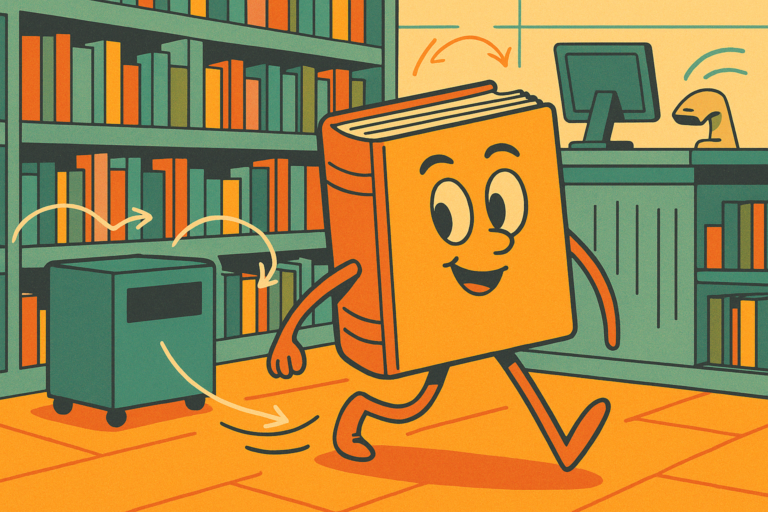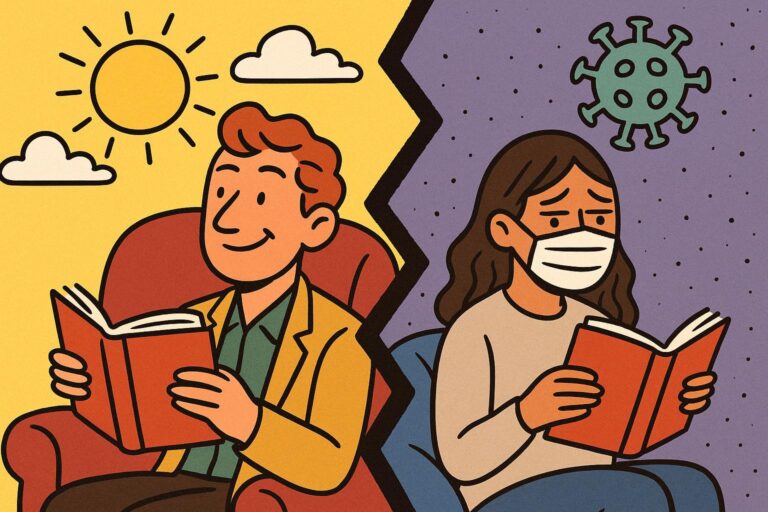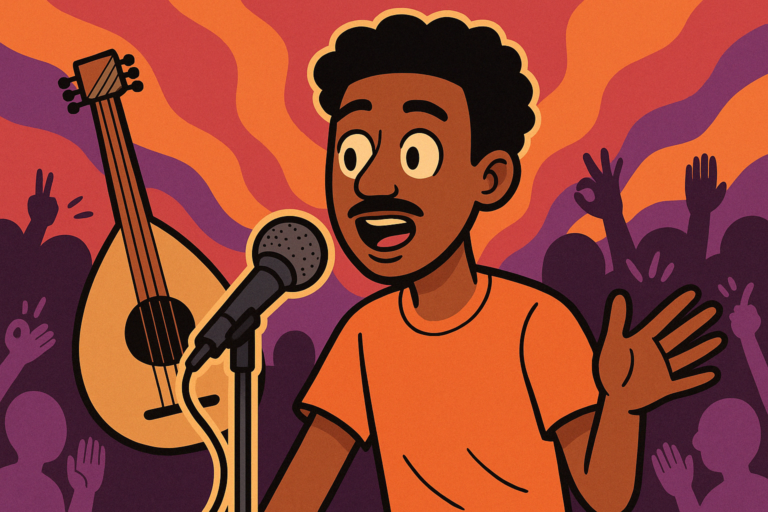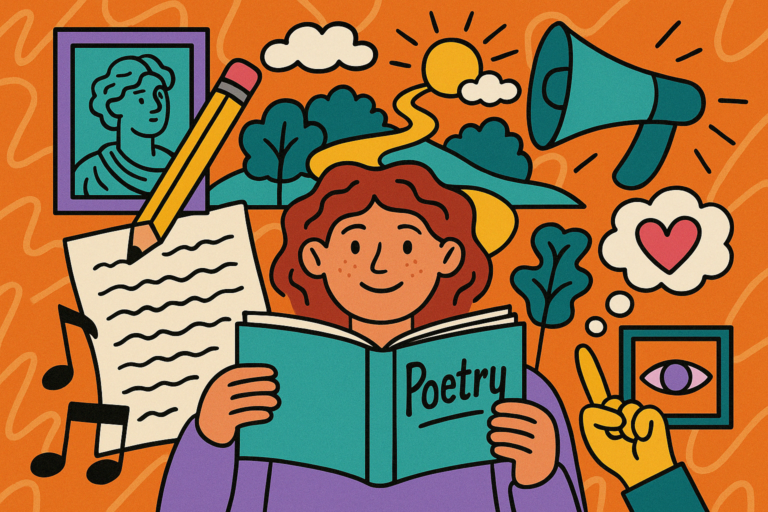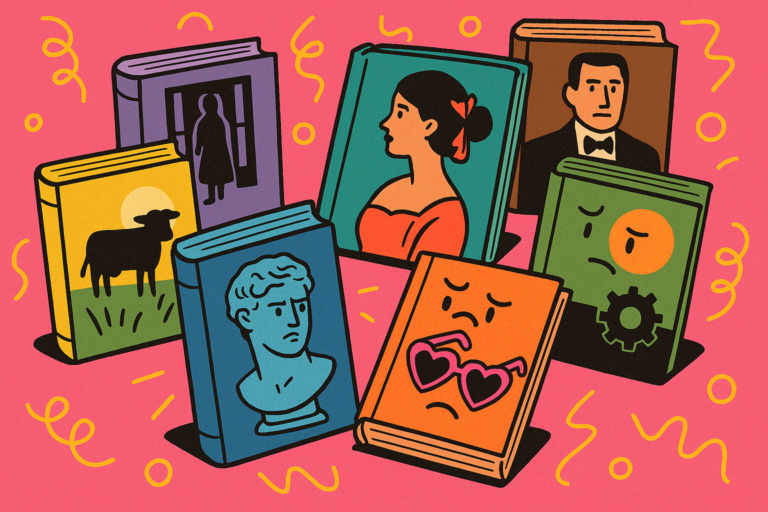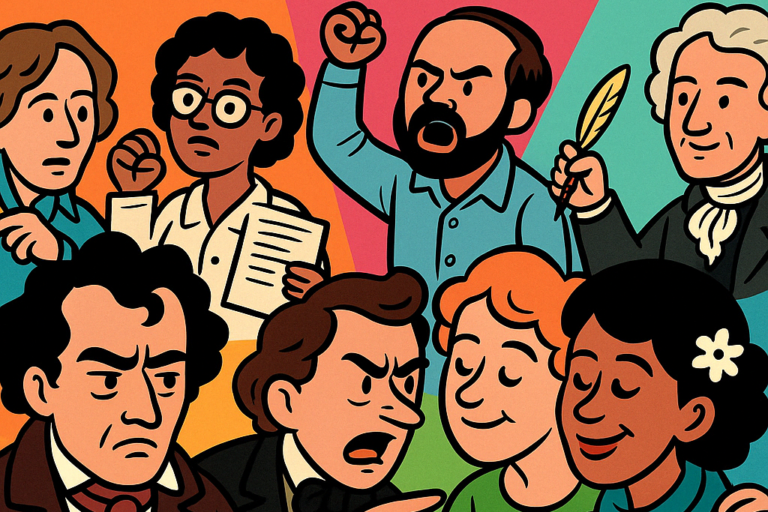What is the Future of Stories With AI Taking The Lead?
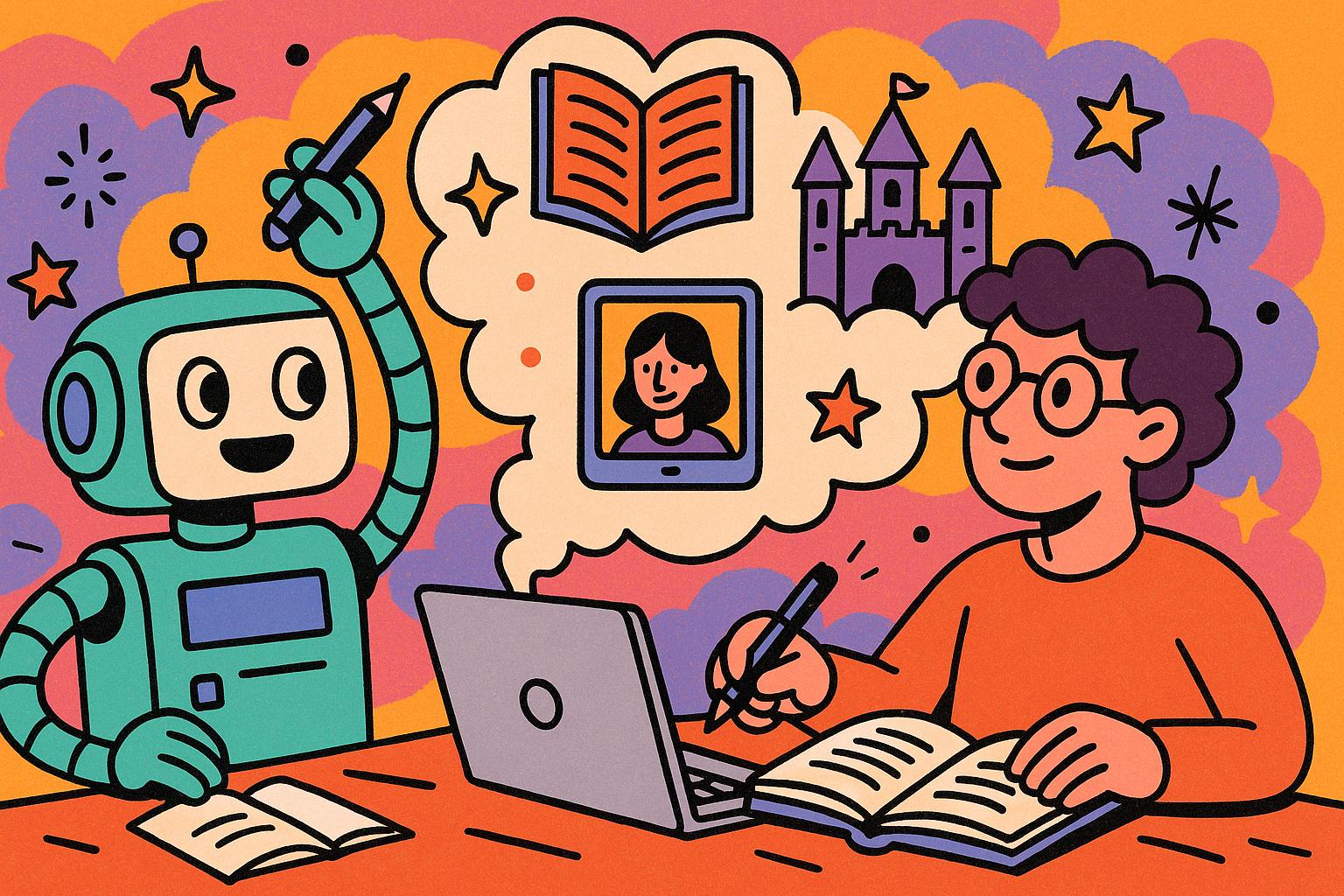
Storytelling’s always felt like this deeply human thing, right?
But lately, I’ve been thinking—we might be at a turning point. With AI stepping more confidently into the creative space, it’s not just helping us tell stories anymore. In some cases, it’s actually leading them.
I know that sounds a bit sci-fi, but stay with me.
I’ve been diving deep into this topic, and what’s happening isn’t about replacing authors or screenwriters—it’s about rethinking what storytelling even is when machines can imagine with us. Or sometimes… for us.
From large language models like GPT-4 and 4.5, to generative art tools and procedural worldbuilders, AI isn’t just shaping how stories are created—it’s reshaping the very structure of stories themselves. And as someone who’s spent a lot of time researching this space (but not coding these models!), I’ve gotta say: what I’ve found surprised even me.
How AI is Already Reshaping Storytelling
Alright, let’s get into the good stuff—what’s actually changing because of AI?
We’re past the hype stage. AI is no longer this novelty tool we experiment with on the side; it’s embedded in production pipelines, audience experiences, and even the core DNA of new storytelling platforms. What’s especially fascinating is how AI doesn’t just fit into traditional narratives—it often demands we reimagine what stories can be.
1. Narrative Generation with AI as a Co-Writer (or Ghostwriter)
We’ve all seen AI-written stories floating around online—some charming, some weird, some honestly a little terrifying in how not-bad they are. But what’s actually interesting to me is how writers are now using AI as a story development partner, not a replacement.
Take Sudowrite, for example. It’s not writing entire novels on its own, but it’s being used by real authors (some award-winning) to brainstorm, fill in descriptions, and even create alternate plot paths. The tool’s “Twist” and “Describe” features are helping writers jump past blocks and surprise themselves.
Key point: AI is introducing randomness and generative novelty into otherwise linear, often predictable creative processes. And that randomness is turning into a creative asset.
Then you have tools like ShortlyAI and Jasper, which marketers and content teams are using for serialized storytelling and brand narrative—something that used to be purely human-driven. These systems are learning voice, tone, and even emotion through fine-tuning.
So yes, we’re still in the human + AI zone here—but the collaboration is getting smarter and more seamless.
2. World-Building
Here’s where I got genuinely impressed: the way AI can handle scale.
Writers and game devs have always wrestled with world-building—it’s one of the most resource-intensive parts of storytelling. But tools like Promethean AI (used in AAA game studios) are flipping that script by procedurally generating complex environments based on just a few prompts or sketches. What used to take months now takes hours.
And then there’s Inworld AI, which powers autonomous NPCs that carry persistent memory and can have dynamic, unscripted conversations. These aren’t prewritten dialogue trees anymore; these are characters reacting in real time, shaped by context, backstory, and the player’s input.
What that means is, we’re moving from fixed, authored worlds to living, reactive ecosystems—the kind that can scale and evolve well beyond what human teams alone could maintain.
3. Personalized, Interactive, and Nonlinear
This part seriously excites me. You know how Netflix and Spotify personalize content selection? Imagine that same logic applied to the content itself.
Startups like Hidden Door are experimenting with interactive storytelling engines where AI weaves personalized narratives based on your mood, your past choices, or even your Spotify listening habits (yep, really). Each user gets a different story—tone, pacing, even outcomes—all dynamically generated.
That’s massive. We’re not just talking about choose-your-own-adventure here. This is real-time narrative adaptation. In AI-led storytelling, the audience isn’t passive. They’re players, co-authors, sometimes even protagonists.
4. AI-Driven Storytelling in Media Production
We’re already seeing this in commercial storytelling too. Remember when Coca-Cola launched their “Create Real Magic” campaign? They gave people a branded version of DALL·E and GPT, letting them create custom Coke ads, jingles, and stories. It was gimmicky but effective—and gave a glimpse into how brands might outsource creativity to their own audiences using AI.
More structurally, production studios are using AI for script analysis, mood boards, and even test storyboards. Tools like Runway and Pika are letting creators generate entire scenes or pitch trailers with minimal input. That’s not just cost-cutting; it’s fundamentally changing the speed and iteration loop in visual storytelling.
5. AI and Collaborative Authorship
One of the most fascinating shifts (and something I didn’t expect to care about as much as I do now) is the blending of human and machine voices in co-authorship.
It’s not always about the AI writing 100% of the story—it’s about what happens when it injects surprise, contradiction, or perspective we wouldn’t have come up with on our own. That’s something human authors value, not fear.
For example, the artist and writer Ross Goodwin famously drove across the country with a camera and a GPS system feeding data into an AI that wrote poetry based on what it “saw.” Was it good poetry? Debatable. But it was undeniably new—and weirdly emotional.
These kinds of hybrid processes open up artistic possibilities we’ve never had before. AI isn’t a replacement for vision—it’s a reflection of it, warped just enough to make us look twice.
Alright, that’s the lay of the land so far. AI isn’t just helping us tell stories better—it’s pushing us to rethink what stories even are.
The Structural Shifts — What’s Changing in Story Architecture?
If there’s one thing I’ve realized after poring over dozens of AI storytelling tools, whitepapers, and real-world experiments, it’s this: we’re not just changing who tells stories—we’re changing what stories even are.
Traditional story structures?
They’re kind of getting ripped up, re-coded, and reassembled into something new. So let’s look at five of the biggest structural shifts that are happening right now:
1. From Linear to Non-Linear Storytelling
This is probably the most visible shift—and honestly, one of the most fun.
Traditional storytelling follows a line: beginning, middle, end. Even complex timelines (hello, Tarantino) are still planned. But AI unlocks branching narratives that adapt in real time based on user input.
A great example is AI Dungeon, which uses large language models to spin entire fantasy adventures on the fly. Your character says something, the AI reacts, and boom—you’re in a totally new direction. There’s no plot map. Just endless forks in the road.
And we’re not just talking indie games here. Studios like Quantic Dream (creators of Detroit: Become Human) are already using AI for branching dialogue that reacts more organically to player choices. The goal? Move from “pick one of three scripted options” to say anything, and the world adapts.
What this means is: storytelling isn’t just interactive—it’s emergent. The shape of the story is no longer a line. It’s a web. Or maybe a neural net.
2. From Authored to Generative Design
Historically, a story has an author. Someone plans it, writes it, edits it. That’s the whole point.
But now? With AI, the story logic can be computed on demand, using algorithms to determine plot beats, character arcs, even pacing.
Tools like Charisma.ai or Inworld AI don’t just generate character dialogue—they’re using underlying character models with emotion matrices and memory systems. That means the AI isn’t just “making stuff up.” It’s acting based on character history, personality, and goals—just like a writer would, but dynamically.
This fundamentally changes the design process. Instead of writing a scene, creators are writing parameters and narrative rules, and letting AI fill in the specifics. It’s almost like game design meets screenwriting.
Narrative becomes procedural. That’s wild.
3. From Audience to Participant
This one’s been bubbling for a while in gaming and immersive theater, but AI takes it to the next level.
Think about it: in a traditional movie or novel, the audience just watches. They consume. But when stories are AI-powered, they can become co-creators—actively shaping how the narrative unfolds in real time.
In VR experiences powered by AI (like those being developed by Fable Studio or Within), users can talk to characters who remember them, adapt their tone, and alter the story world based on past interactions.
Suddenly, we’re not reading the hero’s journey—we’re living it. And AI is the invisible DM behind the curtain, adjusting the narrative in real time.
The user becomes the protagonist, not just the observer. That’s a huge shift in narrative power.
4. From Fixed Canon to Living Lore
One of the challenges with big fictional universes (Marvel, Star Wars, etc.) is that canon gets tricky. Once something is established, it’s locked. Retcons become controversial. Fans get territorial.
But what if canon could adapt and evolve—not just because writers change it, but because AI tracks the world in real time?
In AI-driven RPGs and narrative games, the “lore” of the world can update based on user behavior. You kill a king? The world remembers. A new religion forms around your actions. Next time you return to that location, NPCs reference it.
This is already happening in games like Crusader Kings III (with procedural storylines and AI-generated historical events) and Dwarf Fortress (with simulated world histories). But now, generative storytelling tools are bringing that kind of living continuity into fiction, branded content, and even fan experiences.
The result: canon isn’t fixed—it’s fluid.
5. From Scarcity to Abundance
Here’s the part no one really talks about enough: we’re entering a world of infinite stories.
With AI, you don’t need a year to write a novel. You need a prompt, a model, and some editing chops. Tools like StoryStream are being used by brands to create personalized stories at scale—thousands of variants of a campaign, each slightly different, all AI-generated.
That’s incredible… and also kind of terrifying.
We’ve moved from the scarcity of content (a handful of books, a few big movies a year) to a reality where content is cheap, fast, and endless. The bottleneck now isn’t creation—it’s curation.
Who decides what’s worth reading, watching, or playing? That’s a whole new problem—and one we’ll definitely need to solve.
Emerging Tensions and Frontiers
Okay, so all of this sounds exciting—and it is! But let’s be real: it also raises a ton of tricky questions that we haven’t figured out yet.
The future of AI-led storytelling isn’t just about innovation. It’s about negotiating new tensions, and navigating unfamiliar creative territory.
Let’s unpack a few of the big ones I kept bumping into during my research:
1. Authorship and IP Questions
Who owns an AI-generated story? That’s the million-dollar (maybe billion-dollar) question.
Right now, copyright law in most countries doesn’t recognize AI as an author. Which makes sense—AI doesn’t have legal personhood, after all. But what if a human feeds in a prompt, and the AI generates 95% of the output?
Does the human own it? The AI’s creators? The model trainer?
This gets even messier when you consider models trained on copyrighted data. If an AI mimics Stephen King’s style a little too well, are we crossing a line?
There are already lawsuits happening in the art world (Getty vs. Stability AI, for example), and it’s only a matter of time before similar battles hit storytelling.
We need new frameworks—and fast.
2. Narrative Coherence vs. Generative Freedom
One of AI’s strengths is also a weakness: it can generate anything. But should it?
Endless generation doesn’t guarantee quality. In fact, it often means a loss of coherence. Plots meander. Tone shifts. Character motivations become inconsistent.
We’ve seen this in AI-generated fiction where characters suddenly teleport, change names, or contradict themselves mid-paragraph. (Honestly, I’ve seen weirder stuff in AI fanfic forums than in any surrealist novel.)
So the challenge becomes: how do we preserve meaning and structure in an open-ended, generative world?
Tools like narrative scaffolding, memory tokens, and plot constraint layers are trying to help—but it’s still early days.
3. Bias, Tropes, and Ethics in AI Stories
Let’s not sugarcoat this: generative models reflect the data they’re trained on. Which means they often reproduce the same problematic tropes, biases, and exclusions we’ve spent decades trying to correct in human storytelling.
We’re talking:
- Overrepresentation of certain cultures and viewpoints
- Reinforcement of gender stereotypes
- Lack of diversity in protagonists and themes
Unless we actively fine-tune and audit these models, we risk scaling up the same tired—and sometimes harmful—narratives.
Some companies are working on this (OpenAI, Cohere, Anthropic, etc.), but the ethical questions remain: Whose stories are being told? And who’s being left out of the future?
Frontiers to Watch
As wild as the current state of AI-led storytelling already is, what’s coming next is even more boundary-pushing. These aren’t just incremental improvements—they’re fundamental rethinks of what narrative, authorship, and engagement might look like in the near future.
Here are four frontiers I believe are worth watching closely:
1. Real-Time Adaptive Storytelling in XR Environments
Imagine stepping into a virtual world where the story doesn’t just respond to your actions—it’s shaped by your presence. That’s where things are headed in extended reality (XR), where spatial computing meets generative storytelling.
Startups and research labs (like Fable Studio or MIT’s Media Lab) are building AI characters that maintain continuity across interactions. Think of a VR protagonist who remembers your past conversations and subtly shifts the plot based on your relationship. We’re moving from linear experiences to dynamic narrative ecosystems where the world evolves around you.
What makes this exciting is the fusion of environment, embodiment, and narrative. AI doesn’t just write the story—it becomes part of the sensory world you move through.
2. Emotional Feedback Loops in Narrative AI
This one feels almost like science fiction, but it’s very real and very close.
With advancements in affective computing, AI systems can now analyze tone, facial expressions, and even biometric data (like heart rate or pupil dilation) to infer emotional states. When integrated into storytelling platforms, this enables narratives that adapt to your feelings in real time.
For example, if the AI detects rising anxiety, it might slow the pacing, soften the soundtrack, or give your character a comforting moment. If you’re disengaged, it could pivot the plot to something more intense or surprising.
This creates a kind of empathetic feedback loop, where story and reader/viewer are in dialogue—not through words, but through emotion. Imagine the implications for mental health, education, or even grief processing through interactive fiction.
3. Multi-Modal Storytelling (Text, Visual, Audio, Interactive)
We’re rapidly moving into a world where stories are no longer confined to a single mode of expression. Instead, narrative is becoming natively multi-modal—fusing words, images, voice, animation, and interactivity into one cohesive experience.
Projects built on tools like Runway Gen-2, Pika, ElevenLabs, and Sunō AI are already generating fully voiced, animated short films from a few lines of input. Soon, creators will be able to produce an entire episode of a show—script, voiceover, visuals, even score—using a single creative prompt.
This democratizes cinematic storytelling on an unprecedented scale. It also raises new creative questions: What does authorship mean when one person (or AI) can control every channel of expression? What new narrative structures will emerge when dialogue, music, and visuals are co-generated in sync?
4. Fully Autonomous Story Engines as SaaS Platforms
This one feels like it’s going to be a massive disruptor—especially in publishing, media, and branded storytelling.
We’re already seeing the early prototypes of platforms where you input a prompt like “create a serialized thriller podcast about corporate espionage,” and the engine returns an entire production package:
- Scripted episodes
- Character bios and arcs
- Generated audio with synthetic voice actors
- Promo content for socials
- Even tailored distribution strategies
This is storytelling as software-as-a-service (SaaS). Not just a creative tool, but an entire narrative pipeline automated through AI. It’s being explored in stealth mode by several startups, but you can already see shadows of it in platforms like StoryStream, Lately, and even OpenAI’s API-based production workflows.
What excites (and slightly terrifies) me here is the scalability. Anyone—from indie creators to global brands—could spin up a story universe in minutes. The traditional bottlenecks of time, budget, and human labor? They start to dissolve.
But again, this comes with new challenges: How do we maintain quality?
Voice? Originality?
How do we ensure diversity and avoid a flood of lowest-common-denominator content?
All of these frontiers point to a future where storytelling becomes more fluid, responsive, and personalized than ever before. They’re not just technical innovations—they’re invitations to rethink what narrative even means when it’s generated, performed, and lived in real time.
If you’re working in this space, these are the edges you’ll want to be exploring—and honestly, helping to shape.
Before You Leave
So, here we are—standing at the edge of a storytelling revolution.
AI isn’t just a tool anymore. It’s becoming a collaborator, a co-author, even a narrative architect. And with that comes huge potential… and just as many questions.
I’m not saying humans are being replaced. (We’re too good at being weird and brilliant for that.) But we are being repositioned—from sole creators to partners in something much bigger, stranger, and more generative than we’ve ever experienced.
If you’re in this field—researcher, writer, developer, or all of the above—this is your moment. The future of stories is being written in real time. And we all get to help author it.
